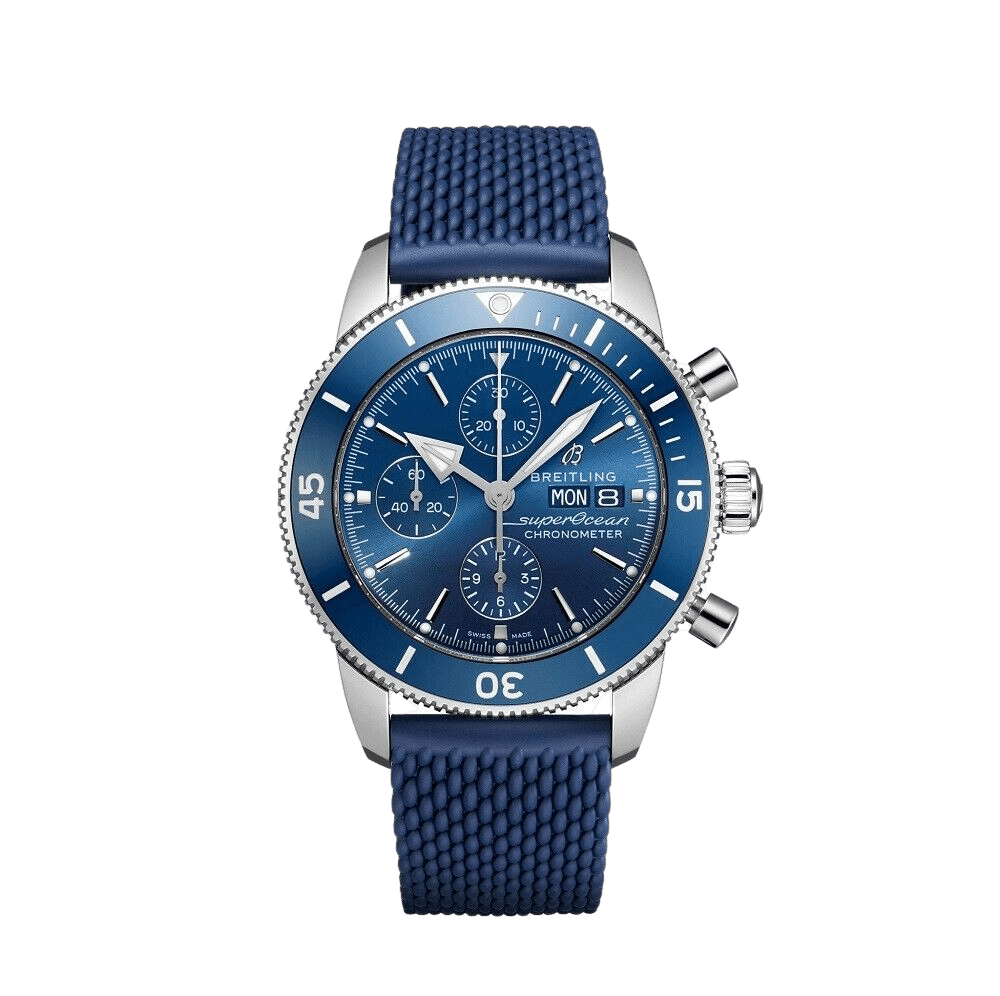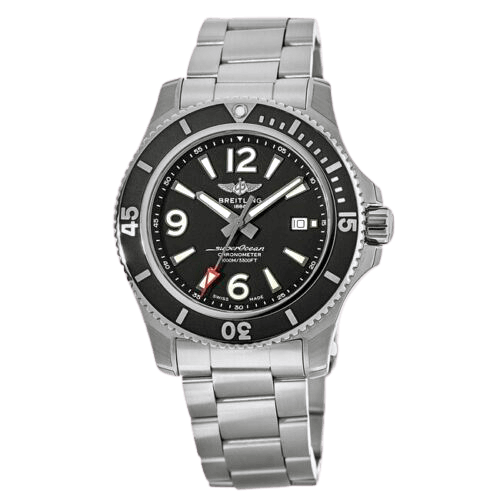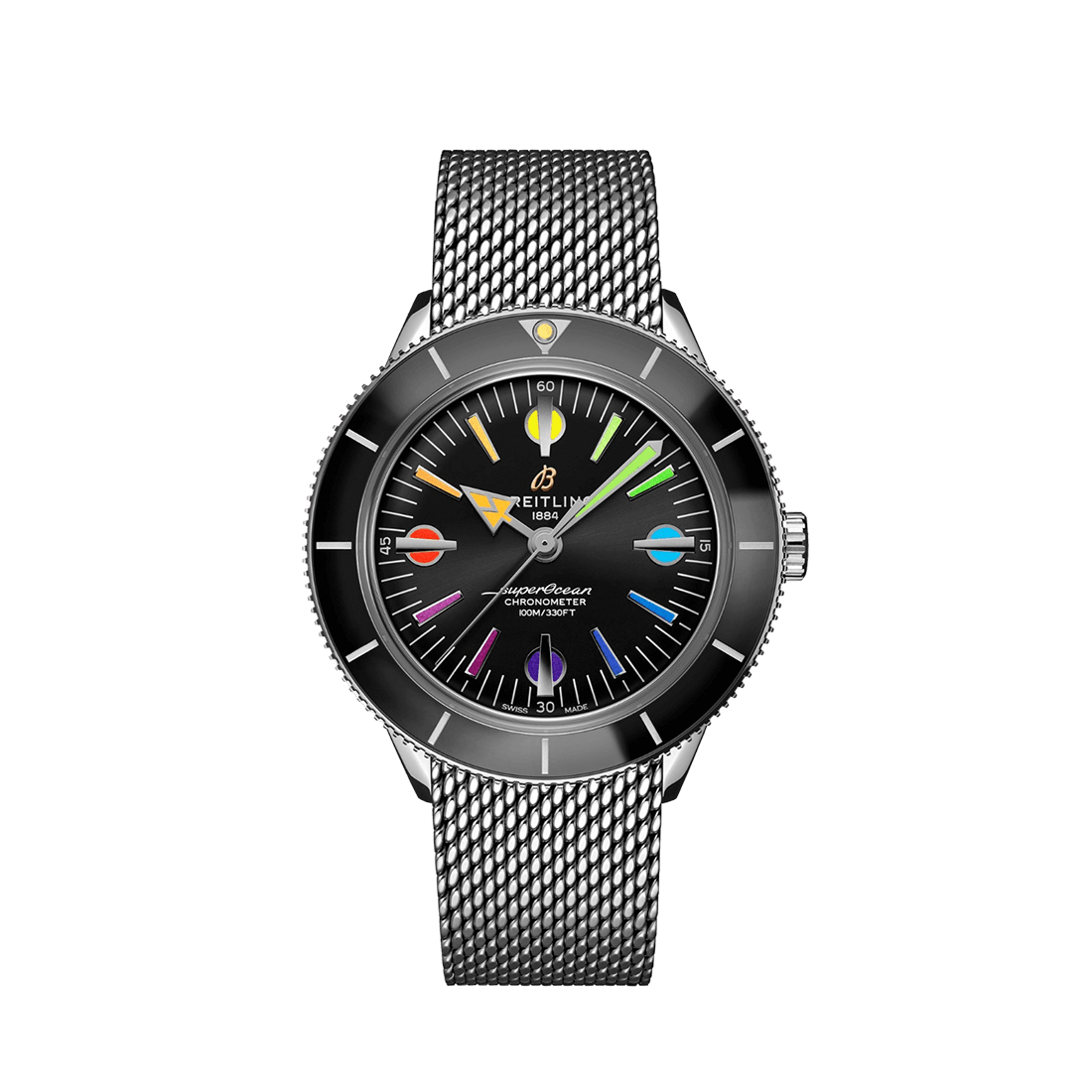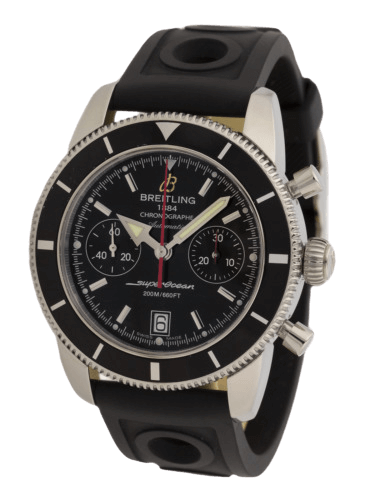Introduction to the Breitling SuperOcean

Breitling is well known for its pilots' watches, but their expertise extends to the sea. The Breitling SuperOcean is an extremely capable divers watch with a rich history going back over 60 years.
To understand the introduction of the Breitling SuperOcean in 1957, it helps to look at the competitive landscape at the time. The Omega Seamaster debuted in 1948, and shortly thereafter made a record setting dive of 62.5 meters on the wrist of Gordon McLean. The iconic Rolex Submariner was released in 1954, and was advertised as being capable of reaching depths of 100 meters. The race for dive watch superiority was on, and Breitling was not going to stay on the sidelines. After firmly establishing their expertise in the realm of pilots' watches, they set their sights on dive watches. 1957 saw the introduction of the first Breitling SuperOcean, which set the new diving standard with a depth rating of 200 meters. 200 meters is a very deep dive, exposing the diver to a serious risk of oxygen toxicity. It is only possible for the most experienced professional divers, and the Breitling SuperOcean is up to the task.
The SuperOcean's Slow Counter Chronograph
The essential job of any divers' watch is to measure the elapsed time of a dive so that the diver knows how much oxygen they have left. The primary way this is done is by using the ratcheting unidirectional bezel. Just before the dive starts, a diver wearing the SuperOcean aligns the bezel to the minute hand. The bezel only moves in one direction, so that an accidental touch of the bezel during a dive only shortens the length and won't extend it.
In the 1960s, Breitling introduced the reference 2005 SuperOcean, which included a chronograph as a second way of measuring elapsed time during a dive. This was not a standard chronograph—it was instead a "slow counter" chronograph that skipped the seconds counter in favor of maximizing the legibility of the minutes counter. Removing the elapsed seconds indication was not simple. The wheels of the chronograph mechanism had to be changed to remove the seconds-hand axle so that the dial would fit without issue. Seconds are not crucial for measuring dive time, but minutes are. At the extreme depths the SuperOcean is capable of reaching, legibility of the dial and hands are crucial, and the reference 2005 SuperOcean "slow counter" makes this happen in an intriguing way.
Reverse Panda Dial
When a diver is underwater, their vision may be impaired by their goggles and low light conditions, making it crucial that their watch make it as easy as possible to read the elapsed time. The Breitling SuperOcean boasts a number of firsts in the dive watch arena. Namely, it's the first chronograph to have a reverse panda dial.
A panda dial is an affectionate nickname for a chronograph dial that resembles a panda's face. The subdial colors are inverted to maximize legibility. In the case of a reverse panda dial, the subdials are white, while the rest of the dial is black. This style of dials has gone on to become incredibly popular across a wide range of chronographs.

SuperOcean Auction Highlights
Early references of the Breitling SuperOcean are prized by collectors, which is very evident by recent auction performance. In 2016, auction house Phillips held a thematic sale of vintage chronographs, entitled "Start-Stop-Reset." Lot 4 was a Breitling SuperOcean Reference 807, a stainless steel, 39mm example, circa 1958, with a reverse panda dial. The watch had a high estimate of 30,000 Swiss Francs, and ended up selling for 65,000 Swiss Francs (~$68,000). Vintage SuperOceans definitely have a bright future ahead on the auction market. The watch has an undeniable history, and a diverse collection of individual references make it very appealing to collectors.

The '57 Capsule Collection
Brands such as Breitling that have a rich historical legacy to draw from are seeing success in reissuing their heritage styles with updated movements. Breitling recently did just this with their SuperOcean '57 capsule collection. The '57 capsule collection pays respect to the original Breitling SuperOcean released in 1957, with its oversized indices, retro mesh bracelet and concave diving bezel. This concave diving bezel is made with super hard ceramic and features a luminescent dot at 12 o'clock. While the SuperOcean '57 capsule collection has vintage inspired looks, its internal mechanisms are anything but vintage. A super modern Breitling Caliber 10 movement with 42-hour power reserve keeps the watch running well, and is certified by the Contrôle Officiel Suisse des Chronomètres (COSC) as a chronometer.

Watchmaker's Perspective
Breitling's famous reference 2005 SuperOcean was a huge step forward for divers with its "slow counter" chronograph mechanism, eschewing the traditional elapsed seconds indicator. But Breitling questioned whether the slow counter was so slow that a diver may not realize if it was running or not. How could this be improved and benefit usability? Perhaps make the hand even bigger, or increase its luminosity?
Breitling approached this problem from a watchmaker's perspective. They added a running indicator to the watch, at the 6 o'clock position on the dial. This indicator shows a black dot when the chronograph is not running, which effectively blends in with the rest of the dial. When the chronograph is running, the indicator shows a yellow dot, making it very obvious that the chronograph is running. This seems like a simple addition to the watch, but it actually required a serious modification to the Venus 188 movement underneath the dial. This shows how seriously Breitling approaches its work to increase legibility and usability of its watches.










![[Exc+5] BREITLING A17340 Super Ocean A17340 Black Dial AT Men's Watch From JAPAN](https://i.ebayimg.com/thumbs/images/g/GyQAAOSwUmFmEcNW/s-l225.jpg)

















































